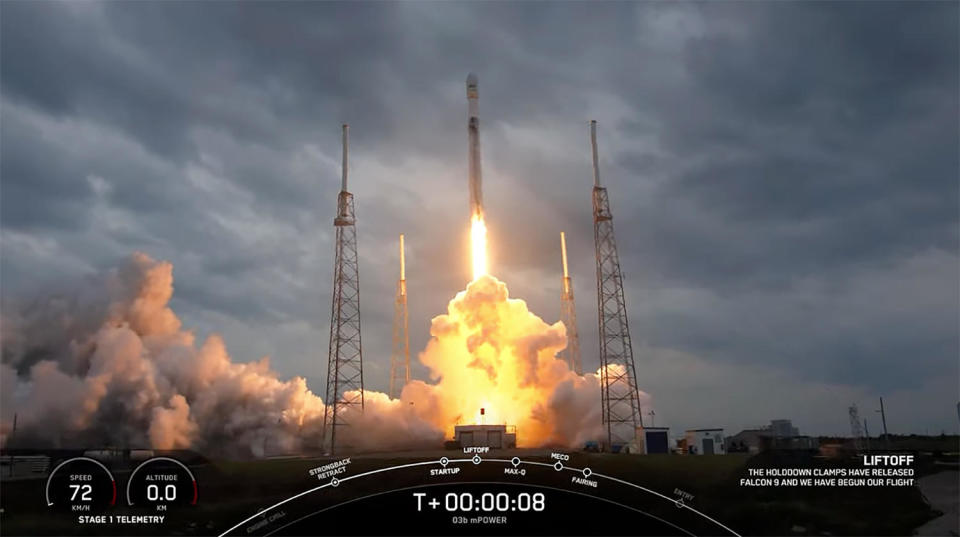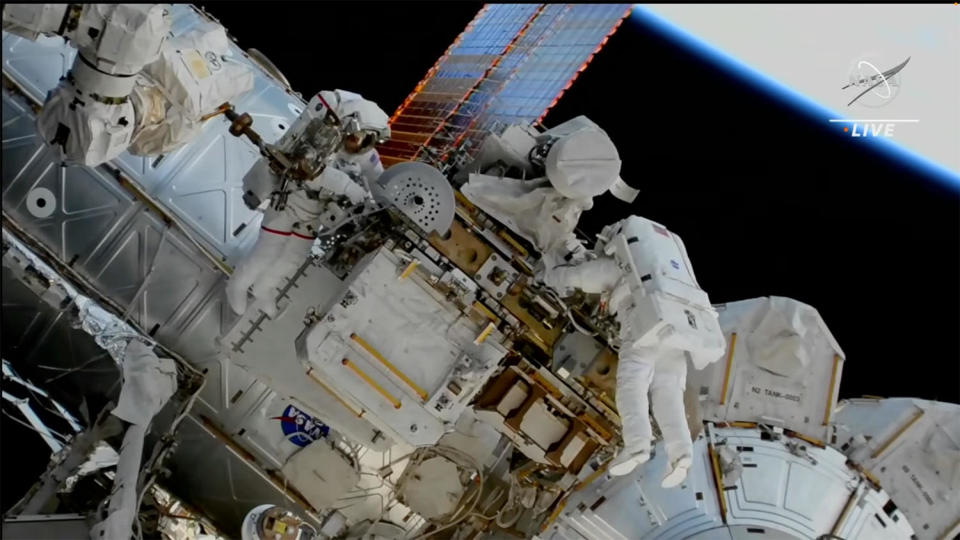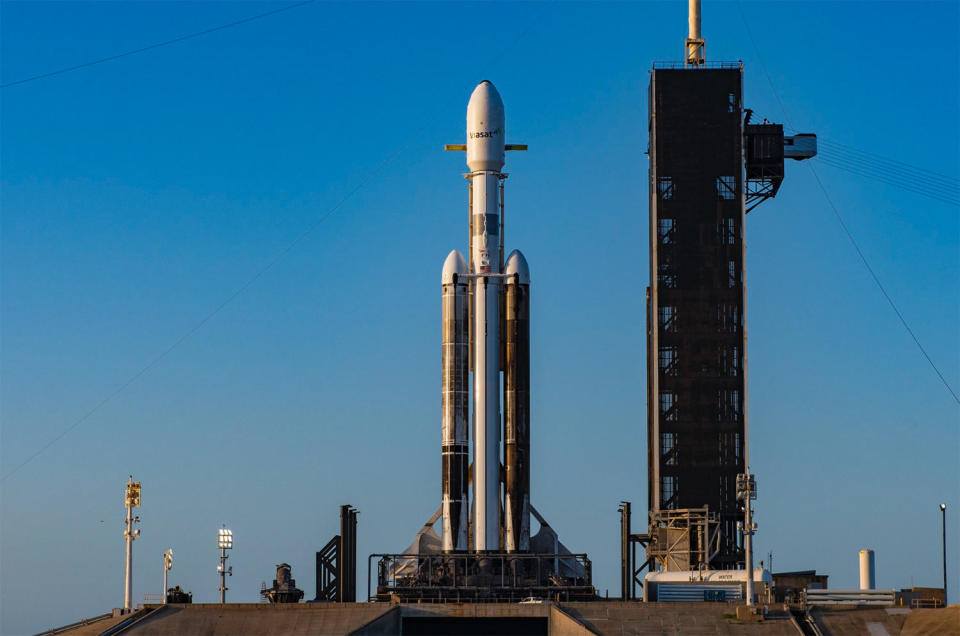SpaceX launches one rocket, but glitch derails another
SpaceX fired off two SES broadband communications satellites from Cape Canaveral, Florida, on Friday atop a Falcon 9 rocket, and then tried to launch a ViaSat internet relay station from the nearby Kennedy Space Center aboard a triple-core Falcon Heavy booster. However, a last-minute glitch triggered a frustrating abort at the end of the launch window.
SpaceX tweeted that the ViaSat payload, and the rocket — the company's most powerful operational booster — were healthy and that another launch opportunity was available Saturday. But no details were provided, and it wasn't immediately known if whatever went wrong could be fixed in time to permit a 24-hour turnaround.

The scrub capped an especially busy day in space, with the first launch coming just two hours after NASA astronaut Stephen Bowen and United Arab Emirates astronaut Sultan Alneyadi completed a 7-hour and one-minute spacewalk outside the International Space Station to make preparations for installation of roll-out solar blankets in June to augment the lab's aging power system.
The spacewalkers also tried to bring in a degraded communications antenna back to Earth for refurbishment, but they were foiled by a jammed bolt and were forced to leave it in place to await another attempt on a future spacewalk. It was the eighth spacewalk for Bowen, who now ranks 10th on the list of most experienced spacewalkers, and the first for Alneyadi.
"Sultan, you've now entered an exclusive club of humans who have stepped out into the void of space and in doing so, you've marked a milestone for the United Arab Emirates," astronaut Anne McClain radioed from mission control in Houston. "Congratulations to you both."

Alneyadi, the first Arab astronaut to make both a long-duration flight aboard the ISS and a spacewalk, thanked NASA and the leadership of both countries for the opportunity, saying "it's a great moment for the UAE."
"It might be a first in the Arab world, but it definitely won't be the last," he said. "We have astronauts under training now to undergo missions to the ISS, to the lunar surface and to Mars. I would like to thank everone who helped getting us to this moment."
Back on Earth, SpaceX was in the midst of gearing up for a dramatic doubleheader, and what would have been the shortest time between two orbit-class launches since 1966. It also would have been the company's second and third launches in just two days.

On Thursday, a Falcon 9 boosted 46 Starlink internet satellites into space from California, but stormy weather in Florida blocked an attempt to get the Falcon Heavy off the ground carrying the first of three ViaSat broadband relay stations.
Despite another gloomy forecast, the ViaSat launch was reset for Friday, shortly after another Falcon 9 launch from the Cape Canaveral Space Force Station to put the two SES 03b mPOWER medium-altitude internet satellites into orbit.
That flight got off the ground at 6:12 p.m. EDT using a first stage making its second flight. Two hours later, the two SES satellites were released to fly on their own as another SpaceX team was fueling the Falcon Heavy for liftoff at 8:26 p.m. SpaceX had hoped to launch the Heavy at 7:29 p.m., but the flight was re-targeted for the end of the launch window because of weather.
Everything appeared to be going smoothly as the countdown ticked into its final minutes. Then, at T-minus 59 seconds, when the rocket's flight computer began final checks, the clock stopped and the countdown was aborted. SpaceX provided no immediate explanation, other than to say another launch opportunity was available Saturday.
Thursday's Starlink launch, the SES flight Friday and the eventual launch of ViaSat's third-generation satellites, highlight the ongoing competition to deploy internet relay stations in space to provide broadband access to customers anywhere in the world, including rural, hard-to-reach or under-served areas, as well as aircraft and ships at sea that cannot be serviced by traditional suppliers.
The satellites illustrate the different architectures being employed, from multi-thousand satellite constellations in low-Earth orbit like SpaceX's Starlink initiative — 4,284 Starlinks have been launched to date — to ViaSat's plan to launch a handful of much more powerful, high-altitude satellites that can provide broadband access on hemispheric scales.
How those competing architectures will play out is anyone's guess, but the rush to stake out a claim on that high frontier is heating up.
How Queen Elizabeth's coronation created a TV broadcasting battle in the U.S.
Florida principal forced to resign visits Michelangelo's David

